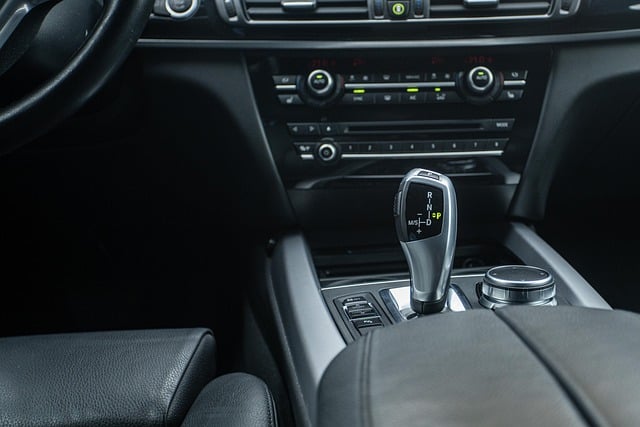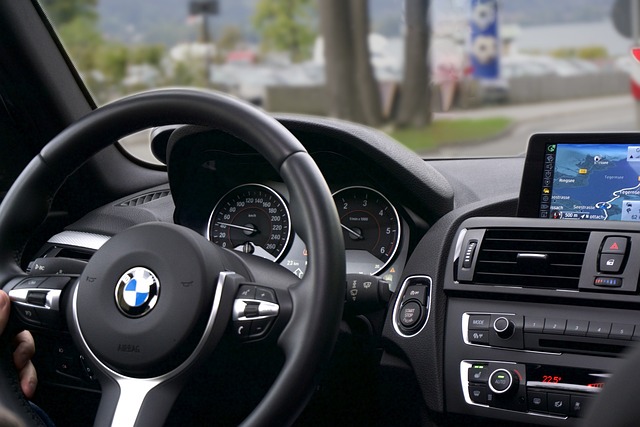Auto insurance protects drivers from financial losses due to accidents or covered events through mutual agreements where policyholders pay premiums for specific coverages. Key types include collision (accidents), comprehensive (non-collision events), and liability (property damage/injuries to others). States set minimum coverage standards, but understanding them is crucial for adequate protection. Balancing collision and comprehensive coverage based on driving habits and vehicle condition is essential. Deductibles, the out-of-pocket cost before insurance kicks in, can be adjusted to balance risk tolerance and budget. Customizing coverage tailored to individual needs and regularly reviewing policies ensures optimal protection without overspending.
In an era of escalating auto insurance costs, understanding your policy options has never been more critical. This article guides you through the essentials of auto insurance, empowering you to make informed decisions. From grasping coverage types like collision and comprehensive to navigating state minimum requirements, we’ll demystify key aspects. We’ll also explore how deductible choices influence premiums and offer insights into customizing policies to suit individual needs, ensuring optimal protection for your vehicle without unnecessary expenses.
- Understanding Auto Insurance Basics: Coverage Types Explained
- State Minimum Requirements: What Every Driver Needs to Know
- Balancing Collision & Comprehensive: Protecting Your Vehicle
- Deductible Options: How They Impact Your Premium
- Customizing Your Policy: Tailoring It To Your Specific Needs
Understanding Auto Insurance Basics: Coverage Types Explained

Auto insurance can seem complex, but understanding its basics is key to making informed decisions. At its core, auto insurance protects drivers from financial loss in the event of an accident or other covered events. It’s a contract between you and your insurance provider, where you pay regular premiums in exchange for coverage.
There are primarily three types of coverage: collision, comprehensive, and liability. Collision coverage pays for damages to your vehicle if it’s involved in an accident, regardless of fault. Comprehensive coverage protects against non-collision events like theft, vandalism, or natural disasters. Liability insurance covers damages you may cause to others’ property or injuries, up to specific limits. Balancing these coverages is crucial; while comprehensive and collision might offer whole-car protection, they come at a cost, so reviewing your needs and deductibles is essential to avoiding unnecessary expenses.
State Minimum Requirements: What Every Driver Needs to Know

In many states, including California, auto insurance is subject to minimum requirement laws set by the state government. These requirements dictate the minimal levels of coverage drivers must carry, encompassing liability, collision, and comprehensive policies. While these minima provide a basic safety net, understanding them is crucial for two reasons. Firstly, they vary significantly from state to state, meaning what constitutes adequate protection in one place might not be sufficient in another. Secondly, these minimums often leave gaps that drivers should account for when customizing their coverage. For instance, while liability insurance covers damage you cause to others, it typically does not cover your own vehicle, which is where collision and comprehensive policies step in. Therefore, every driver must thoroughly comprehend these state-mandated guidelines to ensure they are adequately protected on the road.
Balancing Collision & Comprehensive: Protecting Your Vehicle

When it comes to auto insurance, finding the right balance between collision and comprehensive coverage is key to protecting your vehicle without overspending. Collision coverage kicks in during an accident, paying for repairs or replacement up to your policy limits. Comprehensive coverage, on the other hand, covers damages from non-collision events like theft, vandalism, natural disasters, or even bird droppings! While it might seem like comprehensive coverage offers more protection, it typically costs more than collision alone.
The best strategy is to evaluate your driving habits and vehicle condition. If you drive cautiously and park securely, collision-only coverage could be sufficient. However, if you live in an area prone to natural disasters or have a classic car that’s difficult to replace, comprehensive coverage might be the way to go. Remember, it’s about finding a happy medium—a balance between safeguarding your vehicle and keeping insurance costs manageable.
Deductible Options: How They Impact Your Premium

Deductibles are a crucial aspect of your auto insurance policy as they represent the amount you pay out-of-pocket before your insurance coverage kicks in. When choosing a deductible, it’s important to consider your financial situation and risk tolerance. Opting for a higher deductible typically results in lower monthly premiums because you agree to cover a larger portion of potential repair or replacement costs upfront. This can be a wise choice if you have a good emergency fund and drive cautiously. However, if you frequently get into accidents or live in an area prone to natural disasters, a lower deductible might provide more financial protection, even if it means slightly higher premiums.
The relationship between deductibles and premiums is inverse; increasing your deductible will decrease your premium, and vice versa. It’s a delicate balance where you must weigh the potential savings against the increased risk of out-of-pocket expenses in case of an accident. Understanding this dynamic allows you to make informed decisions tailored to your specific needs and budget.
Customizing Your Policy: Tailoring It To Your Specific Needs

In today’s auto insurance landscape, one size does not fit all. Customizing your policy to align with your specific needs and lifestyle is crucial for maximizing value and minimizing stress. This means carefully considering each aspect of your coverage – collision, comprehensive, and deductible – and making adjustments based on factors like your driving record, vehicle age, and personal financial situation.
For instance, if you drive an older vehicle that’s less valuable, you might opt for a higher deductible and reduced comprehensive or collision coverage. Conversely, if you’re a safe driver with a clean record and a newer car, you could choose a lower deductible and more extensive coverage options. Regularly reviewing and adjusting your policy ensures you’re protected appropriately without overspending on unnecessary features.
In today’s ever-changing automotive landscape, staying informed about auto insurance is crucial. By understanding the various coverage types, keeping pace with state minimum requirements, and carefully balancing collision, comprehensive, and deductible options, drivers can navigate the complexities of insurance with confidence. Customizing policies to fit individual needs ensures that you’re not paying for more than necessary while still maintaining adequate protection. Remember, the right balance of coverage could make all the difference in safeguarding your vehicle and your financial well-being.



